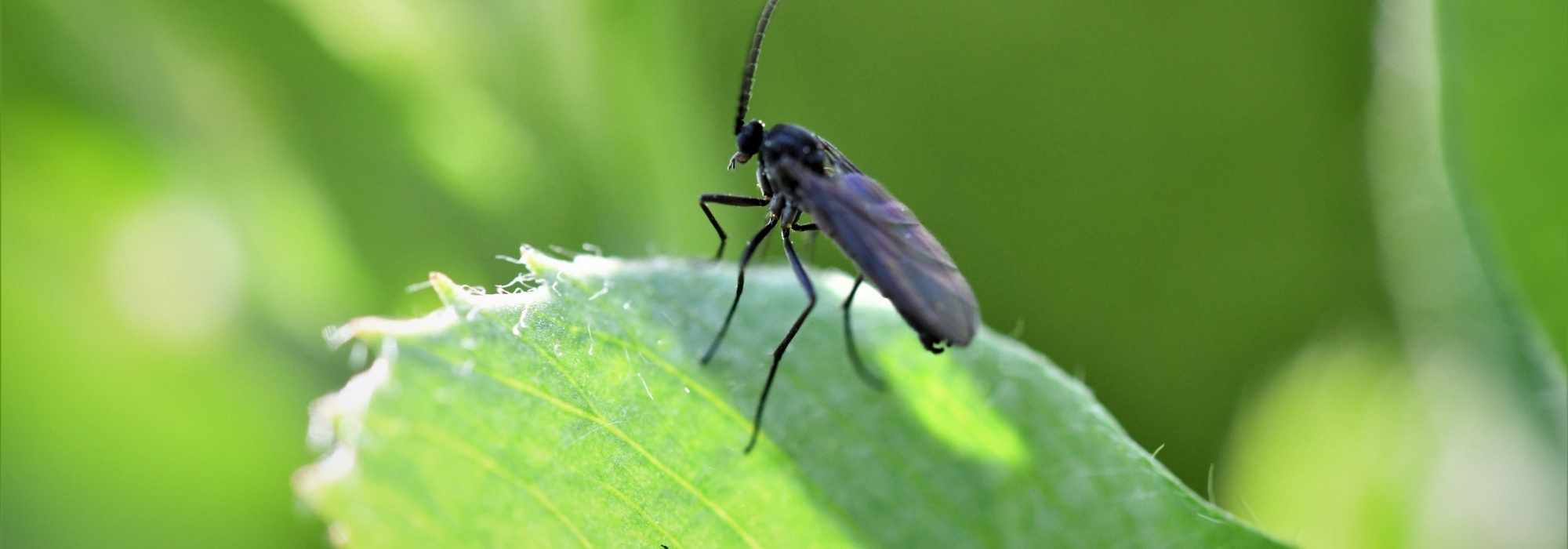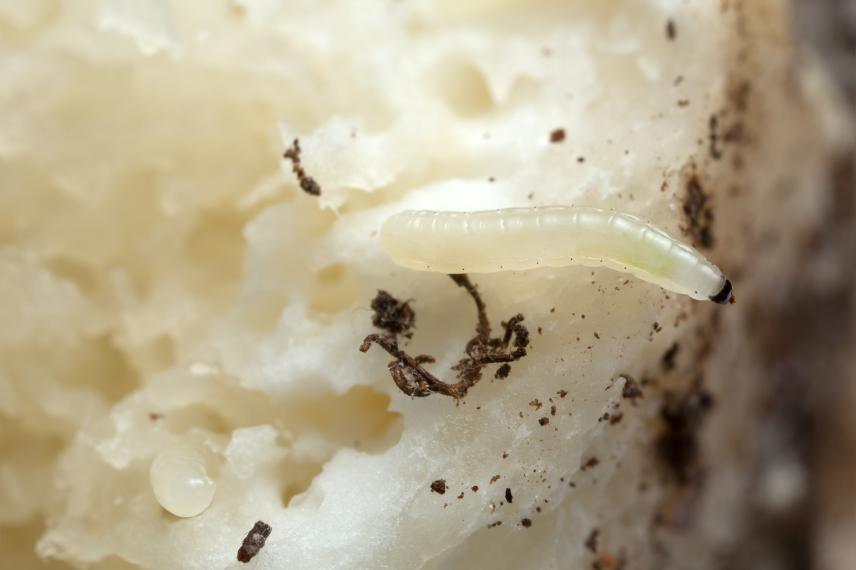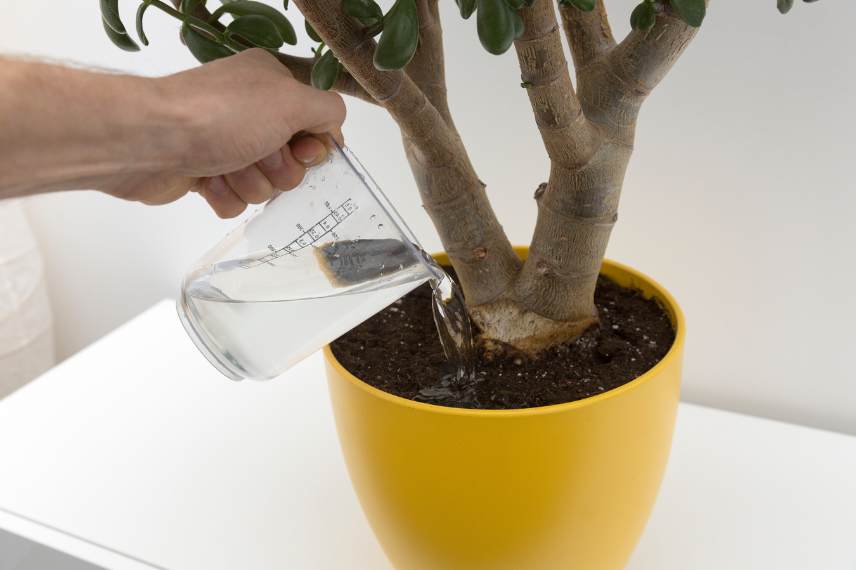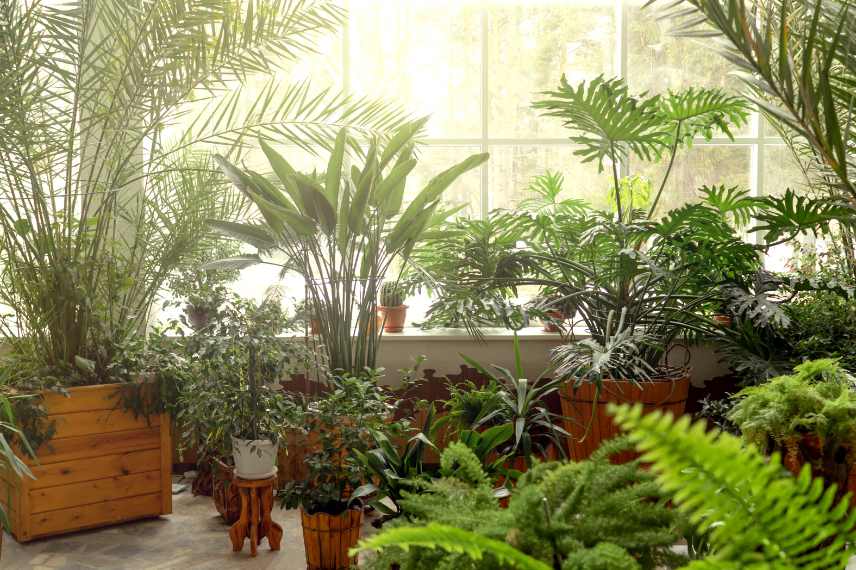
Fungus Gnats in Pots: How to Effectively Prevent Their Spread?
Our solutions to prevent sciarid flies from settling in potted plants, indoors or in greenhouses
Contents
Silent and tiny, fungus gnats or sciarid flies can quickly become a nightmare in our growing spaces, whether indoors or in a greenhouse. We often spot these small black dipterans when they fly away as we approach. But be aware that this annoying flight hides another issue, potentially dangerous for the survival of your plants. Larvae may already be settled in the substrate, quietly nibbling on the tenderest rootlets. The proliferation of fungus gnats often signals an imbalance in our cultivation practices.
Discover how to prevent fungus gnat infestations by adopting simple measures well before any invasion occurs.
Who are the fungus gnats?
Sciarid flies, also known as soil flies or fungus gnats, are dipterans from the Sciaridae and Mycetophilidae families, comprising around ten very common species in our houseplants or greenhouses in our latitudes. All belong to the Bradysia, Lycoriella or Ctenoscia genera.
Gnats of damp environments
The adults are rather slender in appearance and measure 1 to 10 mm long, often black in colour. Their wings are often pale, even translucent. Although you may feel that soil flies are somewhat invasive, they fly very little and mainly move by walking on the substrate. As for the larvae, they are elongated and legless, with a white to yellowish body.
A very rapid life cycle
As the adults only live for a week, they have just one concern: reproduction. This is why the female lays 150 to 300 eggs, usually in rich, damp soils or substrates. A few days later, the larvae hatch and feed on decomposing organic matter, as well as on plant rootlets. Their development cycle lasts around two weeks before they pupate and become young adults, starting a new cycle again.

Soil fly larvae
Due to their rapid growth, many generations succeed one another in the pots of houseplants or greenhouse plants. And often at different stages!
The consequences for plants
If the larvae proliferate in the soil or substrate, the plant will first stop growing, then it will show signs of distress, such as sudden wilting of the leaves, a noticeable loss of vigour, and finally yellowing of the foliage. In cases of severe infestation, the plant may die.
Soil flies mainly proliferate in spring and summer, sometimes in early autumn. They primarily target young plants or weak plants, as well as sowings and cuttings.
Humidity, a key factor in fungus gnat proliferation?
Humidity is undoubtedly the most decisive factor in the appearance of fungus gnats. Sciarid flies primarily seek moist or waterlogged substrates on the surface to lay their eggs. Once hatched, the larvae take advantage of this constant moisture to develop rapidly, feeding on decomposing organic matter… and young roots.
Excessive moisture, particularly in the top layers of the compost, creates an environment conducive not only to sciarids but also to other soil-borne pathogens. This imbalance often occurs most easily in sensitive crops like sowings, cuttings, and houseplants, as we tend to “overdo it” by watering too regularly.
What should you do to prevent the appearance of fungus gnats?
- Space out watering: Always allow the surface of the compost to dry out between waterings. Sciarids do not lay eggs in dry soil.
- Observe the substrate: Touch or lightly scratch the top of the pot before watering. If it still feels damp, wait before adding more water.
- Improve drainage: Ensure each pot has a proper drainage hole and add a layer of clay pebbles, gravel, or broken pottery shards.
- Use mineral or organic mulch: A thin layer of gravel, vermiculite, pumice, clay pebbles, or ramial chipped wood (RCW) on top of the compost prevents flies from reaching the moist surface to lay eggs.
- Avoid residual water in saucers or outer pots: Stagnant water beneath pots maintains constant moisture in the lower part of the substrate.
The substrate, a more or less attractive environment for fungus gnats?
Compost is much more than just a medium for roots. It’s a living, complex environment, whose composition directly influences plant health… and unfortunately also the attraction for certain pests, like fungus gnats.
These pests are particularly fond of substrates rich in decomposing organic matter. An immature substrate, poorly sieved or too compact, quickly becomes a boon for them: it retains moisture, promotes fermentation, and provides an ideal food source for larvae. Wood fibres or undecomposed compost fragments can also maintain persistently damp areas, perfect for egg-laying.
What can be done to prevent fungus gnat infestations?
- Choose quality compost: opt for well-sieved substrates with properly decomposed organic matter. Avoid very cheap composts, often poorly balanced.
- Lighten and aerate the mix: incorporate mineral components like perlite, pumice or coarse sand to improve aeration and reduce excessive water retention.
- Adapt the compost to the type of cultivation: sowing has different needs than a mature potted plant. Young shoots require a fine, well-draining medium like special sowing compost, while perennial plants can tolerate richer soil, provided it remains well-structured.
- Store compost correctly: an opened bag left in damp conditions can become contaminated quickly. Reseal bags properly, keeping them protected from water and excessive heat.
What are the favourable environmental conditions for fungus gnats?
Even with good compost and controlled watering, the overall environment in which your plants grow can encourage the appearance of fungus gnats. These small insects are opportunistic: they take advantage of the slightest flaw in the microclimate you provide, especially indoors or in greenhouses.
Sciarid flies thrive in warm, humid and poorly ventilated conditions. A stable temperature around 20 to 25°C, combined with a humid atmosphere and filtered light, creates their ideal playground. Suffice to say that our heated homes in winter or poorly ventilated greenhouses offer them idyllic living and breeding conditions.

Fungus gnats thrive in the warm, humid and poorly ventilated conditions of greenhouses, conservatories and winter gardens
What to do to avoid creating favourable conditions:
- Ventilate regularly: whether it’s an indoor growing space or a greenhouse, good air circulation drastically reduces ambient humidity and makes the environment less conducive to their reproduction.
- Avoid humid microclimates: clusters of tightly packed pots, full saucers or shaded areas without ventilation encourage stagnant zones. Give your plants room to breathe by spacing them out.
- Optimise light: sciarid flies avoid bright light. Place pots in full natural light when possible, or use a well-positioned horticultural lamp.
Common Cultivation Mistakes and Their Consequences
Even the most experienced gardeners can sometimes, through routine or lack of vigilance, unintentionally encourage the appearance of fungus gnats. Often due to repeated small oversights or habits ill-suited to the context.
One of the most common mistakes is using pots without proper drainage, or containers that retain excessive moisture at the base. The result? A constantly waterlogged soil at the bottom, which irresistibly attracts sciarid flies. The use of saucers filled with water, especially indoors, further amplifies this issue.
Another frequent problem: reusing old infested soil or poor hygiene with tools and containers. A substrate already colonised or traces of organic matter can serve as a starting point for a new generation of larvae, even in a well-managed new planting.
What you absolutely must do:
- Ensure proper drainage: Always check that pots have sufficient holes. Add a drainage layer at the bottom (clay pebbles, gravel, etc.) and avoid overly compacted substrates.
- Avoid stagnant water: Always empty saucers after watering, especially in winter or indoors where evaporation is slower.
- Clean regularly: Tools, pots, growing trays… anything that comes into contact with the soil must be clean. A rinse with hot water or a mild disinfectant is enough.
- Be mindful of storage: Do not store opened soil outdoors or in a damp environment. Gnats lay eggs easily, and the eggs then wait for the right conditions to hatch.
Above all, when buying a new plant, carefully inspect the surface of the substrate. The slightest swarm of flies or tiny larva should make you put the pot back down!
- Subscribe!
- Contents































Comments